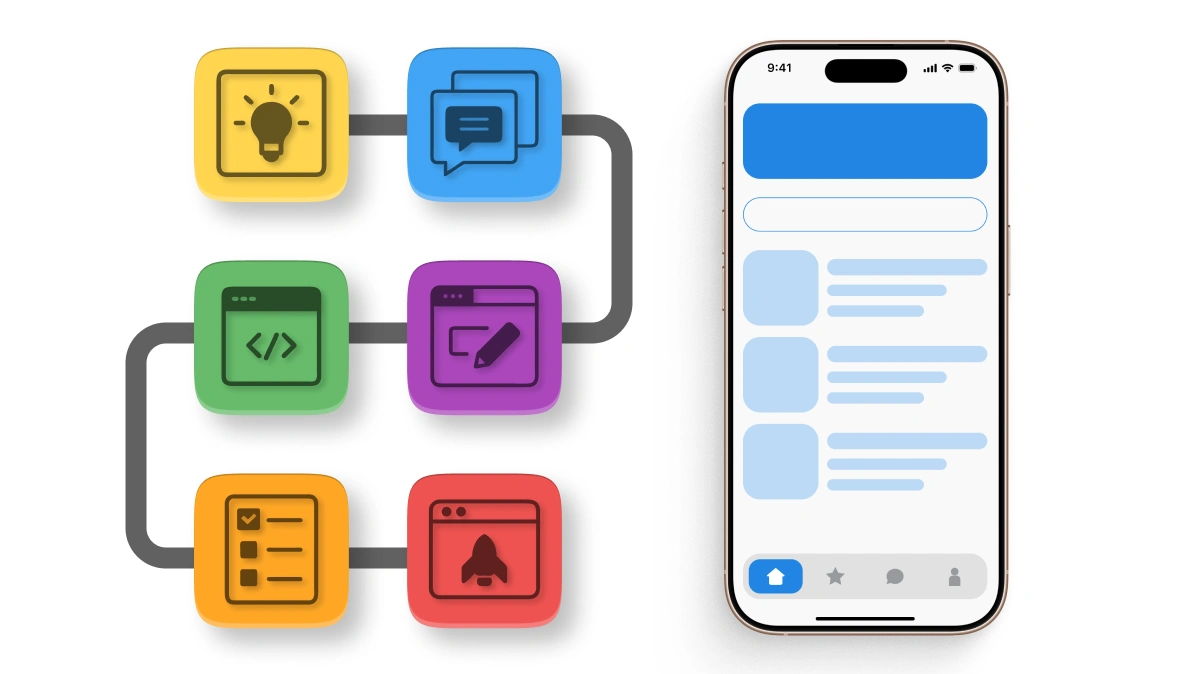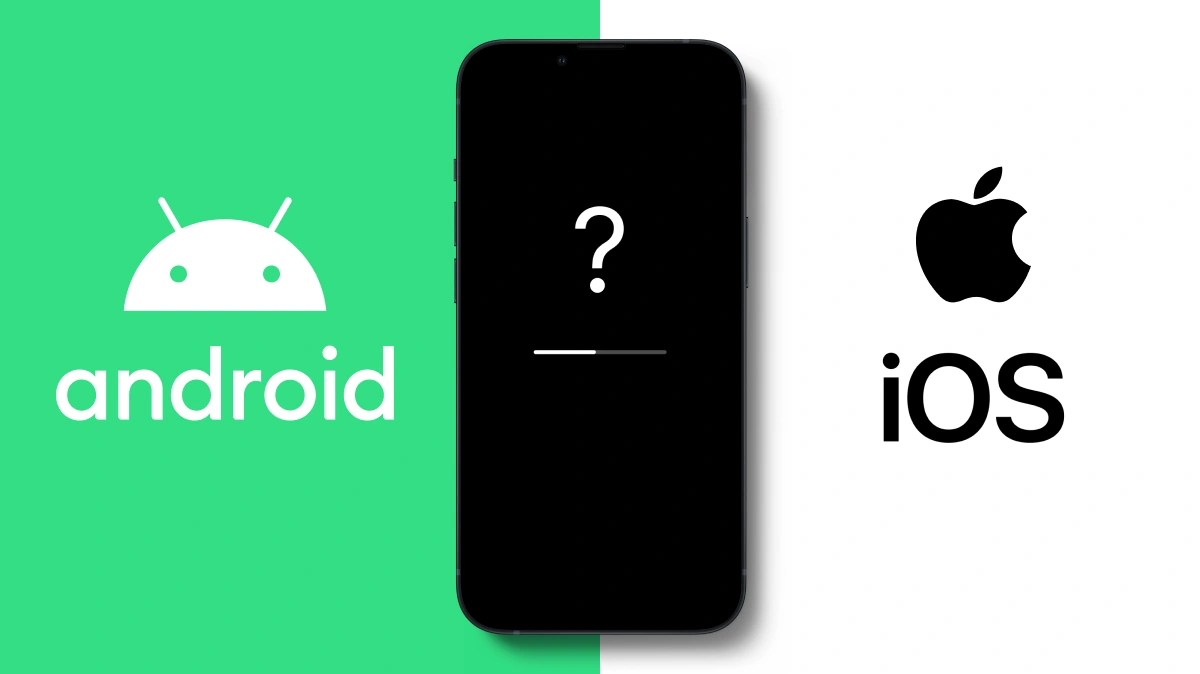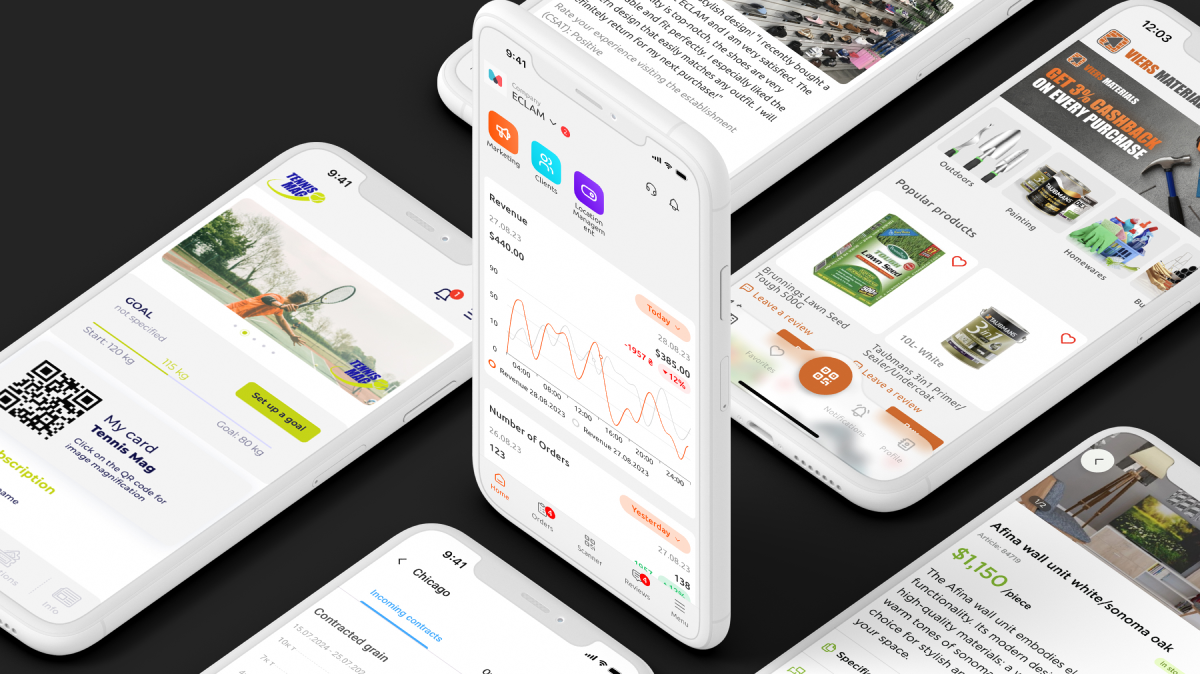
In 2025, mobile apps are the primary channel for customer interaction, with 85% of smartphone users preferring apps for their convenience and speed, according to Statista. However, complex interfaces can deter users, reducing engagement and retention. Microinterfaces—minimalist design elements like buttons, icons, notifications, or animations—simplify the user experience, making apps intuitive and efficient. This article explores how microinterfaces in ready-made mobile apps optimize usability, boost conversions, and support SEO optimization for e-commerce, HoReCa, and other industries.
What Are Microinterfaces and Why Are They Important?
Microinterfaces are small, focused design elements, such as buttons, icons, notifications, or animations, that enable quick and clear interactions. They reduce cognitive load, allowing users to focus on key actions. Benefits of microinterfaces:
- Simplicity: Fewer elements improve usability by 40% (Nielsen Norman Group).
- Speed: Users complete actions 30% faster (Google).
- Retention: Minimalist design reduces bounce rates by 25% (Braze).
- Adaptability: Easily integrated into ready-made platforms like Appy Pie or Shopify.
Microinterfaces are ideal for e-commerce, HoReCa, fitness apps, and educational platforms requiring fast interactions.
1. Simple Design for User Experience
Minimalist Buttons and Icons
Microinterfaces use simple buttons (e.g., “Add to Cart”) and intuitive icons to streamline navigation. For example, in e-commerce apps, a single button can lead to checkout, reducing clicks.
Example: Deliveroo’s app uses a cart icon for quick order access.
Animations for Engagement
Subtle animations, like button highlights on tap, boost engagement by 20% (UXPin).
2. Microinteractions for Enhanced Engagement
Notifications and Prompts
Microinteractions, such as pop-up push notifications or prompts (e.g., “Your cart is waiting!”), encourage users to complete actions. In HoReCa, a notification might say: “Order now for a 10% discount”.
Tools
- Firebase: Setup for targeted push notifications.
- OneSignal: Notification automation.
3. Personalization Through Microinterfaces
Behavioral Adaptation
Microinterfaces enable personalized experiences. For instance, in fitness apps, a widget might display workout progress, motivating users.
Tools:
- Mixpanel: Behavior analysis for personalization.
- Firebase Analytics: Tracks user actions.
AI for Microinterfaces
AI tailors design elements, offering buttons like “Reorder” for frequent purchases in e-commerce.
4. SEO Optimization for App Promotion
Keywords
Use keywords like "microinterfaces", "mobile app" in:
- App descriptions in App Store and Google Play.
- Website content promoting the app.
ASO (App Store Optimization)
Optimize app title, icon, and screenshots to improve visibility in search engines.
5. Integration with Ready-Made Platforms
No-Code Platforms
Ready-made platforms like Adalo or Bubble enable quick microinterface integration via drag-and-drop tools.
- Adalo: Creates minimalist designs.
- Bubble: Customizes microinteractions without coding.
Marketing Integration
Add push notifications via OneSignal for reminders about incomplete actions.
6. Testing Microinterfaces
Usability Testing
Before launch, conduct testing:
- Functional: Verify buttons, notifications, animations.
- Performance: Ensure app responsiveness.
- User Experience: Check interaction ease.
Tools: TestFlight (iOS), Firebase Test Lab (Android).
Analytics
Track engagement via Google Analytics or Mixpanel, analyzing:
- Time to complete actions.
- Conversions post-microinterface interactions.
- Retention rates.
7. Microinterface Trends in 2025
- AI personalization: Tailoring buttons and notifications to preferences.
- AR elements: Interactive microinterfaces in augmented reality.
- Voice interactions: App control via voice commands.
- Sustainability: Microinterfaces for eco-friendly actions (e.g., “Eco-delivery” button).
Microinterfaces in mobile apps revolutionize user experience, making interactions simple, fast, and enjoyable. From buttons and notifications to personalized animations, they boost engagement and conversions. Ready-made platforms like Appy Pie or Shopify enable quick microinterface implementation, saving time and budget. To engage users and optimize usability, leverage microinterfaces in your mobile app and consult professionals for setup.



